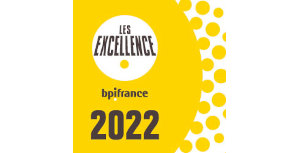The decision of the Enlarged Board of Appeal (EBoA) in the consolidated cases G1/22 and G2/22 concerns the right to claim priority of an earlier application. In particular, it addresses the two important questions of whether the European Patent Office (EPO) is competent to assess whether a party is entitled to claim priority under Article 87(1) EPC and whether the “joint applicants approach” applies to a PCT application where different applicants are listed for different designated states.
Summary of Facts
Decision G1/22 addresses opposition appeal proceedings concerning European patent EP 1 755 674, while decision G2/22 pertains to appeal proceedings for a divisional application from the same patent family. These cases were consolidated under Art. 10(2) RPBA. The European patent application, originating as an international PCT application, claimed priority from a US provisional patent application filed by three inventors. This PCT application identified the three inventors as applicants for the United States, with a different applicant (identified as the “patent proprietor,” later termed the “appellant”) designated for other states.
The patent was revoked after opposition proceedings due to an invalid priority claim; only one out of the three inventors had transferred their priority rights to the patent proprietor. This led to the conclusion that the subject matter of claim 1 lacked novelty over documents D20 and D21, published between the priority and filing dates. Similar issues affected the divisional application, resulting in its rejection on the basis of D20 and D21 constituting novelty-destroying prior art.
The patent proprietor and applicant filed appeals (T 1513/17 against the decision concerning the opposed patent and T 2719/19 against the divisional application’s decision), both overseen by the same Board of Appeal (BoA). A referring decision, issued on January 28, 2022, discussed the “joint applicants approach.” This approach allows a co-applicant, in subsequent applications, to benefit from the priority right of another applicant without needing a separate rights transfer. The appellant argued for the application of this approach to PCT applications with varied applicants for different states (the “PCT joint applicants approach”). The appellant thus regarded the priority right as valid, negating D20 and D21 as prior art.
Acknowledging the controversy over the “PCT joint applicants approach,” the referring decision involved forwarding a related question to the EBoA. Additionally, the parties requested that this inquiry cover the EPO’s authority to determine entitlement to the priority right. This was supported by a broad endorsement in previous case T 844/18, despite differing views in other board communications from unresolved cases.
The referred questions
In view of the above, the referring BoA submitted the following questions to the EBoA for decision:
I. Does the EPC confer jurisdiction on the EPO to determine whether a party validly claims to be a successor in title as referred to in Article 87(1)(b) EPC?
II. If question I is answered to the affirmative, can a party B validly rely on the priority right claimed in a PCT-application for the purpose of claiming priority rights under Article 87(1) EPC in the case where
1) a PCT-application designates party A as applicant for the US only and party B as applicant for other designated States, including regional European patent protection and
2) the PCT-application claims priority from an earlier patent application that designates party A as the applicant and
3) the priority claimed in the PCT-application is in compliance with Article 4 of the Paris Convention?Decision
The questions were considered as admissible and the EBoA answered the two questions as follows:
I. The EPO is competent to assess whether a party is entitled to claim priority under Article 87(1) EPC. There is a rebuttable presumption under the autonomous law of the EPC that the applicant claiming priority in accordance with Article 88(1) EPC and the corresponding Implementing Regulations is entitled to claim priority.
II. The rebuttable presumption also applies in situations where the European patent application derives from a PCT application and/or where the priority applicant(s) are not identical with the subsequent applicant(s). In a situation where a PCT application is jointly filed by parties A and B, (i) designating party A as applicant for one or more designated States and party B as applicant for one or more other designated States, and (ii) claiming priority from an earlier patent application designating party A as the applicant, the joint filing implies an agreement between parties A and B allowing party B to rely on the priority, unless there are substantial factual indications to the contrary.
Reasons for the decision
Situation prior to the decision
In the decision, the EBoA first recalled that the primary purpose of the priority right is to protect the interests of patent applicants for a limited period of time while they seek international protection for their inventions. This is crucial for excluding intermediate prior art, which often includes publications from the priority applicant or related individuals. This protection is especially important in systems like the European patent system, which typically does not offer grace periods that would render such publications non-prejudicial before filing a patent application (points 54-56).
The EBoA then examined case law under Article 87 EPC, finding that the EPO is generally considered to have jurisdiction over deciding entitlement to claim priority, with this uniformity present over the past decade or more, coinciding with a rise in such cases (point 61).
However, the EBoA has identified divergences in case law regarding how the EPO should resolve disputes over entitlement. Specifically, national law applies to succession in title as per Article 87(1) EPC, with Boards of Appeal applying the relevant national law when identified. Parties have often been required to submit evidence, such as legal opinions from independent experts, on the effects of these national laws (points 62-66).
Nevertheless, the referring Board of Appeal noted ambiguities, questioning if national law should assess the legal requirements for transferring priority rights by agreement, given the EPC lacks conflict of laws rules. The referring Board also inferred from previous case law that the EPC may not impose formal requirements for the transfer of priority rights by agreement and suggested that an implicit agreement could suffice for transferring priority rights within the EPC territory, especially in contexts like question II (point 67).
The EBoA then recalled that an applicant can obtain the right to file a patent in a territory either through the priority applicant who has acquired the rights from the inventor for all territories or directly from the inventor. However, the priority right itself arises only from the filing of the priority application, and the priority applicant must provide subsequent applicants with the necessary documents for claiming priority in the respective territories. This distinction highlights the difference between the title to the subsequent application and the priority right (points 74-78).
In EPO proceedings, the applicant is presumed entitled to exercise the right to the European patent under Article 60(3) EPC. The EPO is not empowered to resolve disputes on whether a particular applicant is legally entitled to apply for and receive a European patent. Such entitlement issues are addressed before the grant under the “Protocol on Jurisdiction and the Recognition of Decisions in respect of the Right to the grant of a European patent” (points 79-82). Furthermore, for subsequent applications, priority rights are exclusively governed by Articles 87 to 89 EPC, with no involvement of national laws in the creation or claiming of a priority right. It’s crucial to clearly separate the priority right from the applicant’s entitlement to the application (points 83-92).
The EBoA further observed that agreements through which subsequent applicants acquire the title to an application and the priority right often do not differentiate these two rights. Similarly, some national laws consider the person with rights to the invention as the “successor in title” for the priority right (points 93-98).
The EBoA considered that the EPO should align with minimal standards from national laws, accepting informal or even implicit transfers of priority rights in nearly all situations. It questions the common requirement that the transfer of the priority right must be finalized before filing the subsequent European patent application. The EBoA found this requirement of little practical importance, as it presumes priority entitlement exists when claimed on the subsequent European application’s filing date. Typically, parties transferring the right to a subsequent application intend for the applicant to benefit from the priority right. Moreover, priority application content is generally unpublished or inaccessible to third parties until after the twelve-month limit for filing subsequent applications. The subsequent applicant can only meet the formal requirements to claim priority under Article 88(1) EPC if the priority applicant provides complete and timely support (points 100-104).
Consequences drawn by the EBoA
The EBoA concluded that priority rights are autonomous rights under the European Patent Convention (EPC) and should be evaluated solely within the EPC framework, regardless of any national laws (point 85).
Additionally, there is a “rebuttable presumption of entitlement to claim priority,” meaning that entitlement to priority is generally assumed to exist for the benefit of the subsequent applicant of a European patent application if priority is claimed in line with Article 88(1) EPC and the corresponding Implementing Regulations. This principle applies when the subsequent applicant is not the same as the priority applicant but receives the necessary support from the priority applicant as required by Article 88(1) EPC. The presumption is applicable regardless of whether the subsequent European application originates from a PCT application or the degree of overlap among co-applicants between the priority and subsequent applications (points 105-107).
The presumption of priority entitlement is rebuttable because, in rare exceptional cases, the priority applicant might have valid reasons to prevent the subsequent applicant from relying on the priority. Such situations could arise from the subsequent applicant’s bad faith or outcomes of other legal proceedings, like national court decisions regarding the title to the subsequent application. The rebuttable presumption involves the reversal of the burden of proof, requiring the party contesting the subsequent applicant’s priority entitlement to prove its absence. This entire process, including the presumption and its rebuttal, is governed exclusively by the autonomous law of the EPC, with no role for national laws concerning legal presumptions and their rebuttal (points 108-111).
Implications
The decision establishes that the rebuttable presumption of entitlement to claim priority is governed by the autonomous law of the EPC. However, national laws might still be relevant, particularly in evaluating the existence of legal entities involved in priority rights transfers (point 133).
Although this presumption doesn’t necessarily simplify challenges for opponents, it also applies to EP patent applications and patents cited in proceedings at the EPO claiming priority, potentially facilitating their classification as prior art.
The decision extends the presumption to European patent applications derived from PCT applications and when priority and subsequent applicants differ. It emphasizes the role of implied agreements in transferring priority rights in joint application cases. This particularly affects US applicants using PCT applications for European patents, offering them protection and certainty regarding priority claims, echoing past practices of inventor-filed applications in the US.













